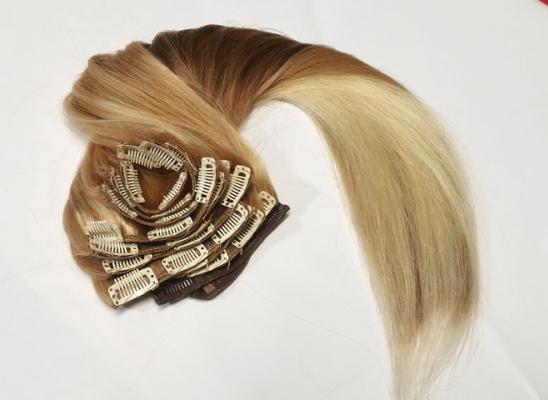Is Trichotillomania Really a Stereotypic Movement Disorder?

Online test
Find out the severity of your symptoms with this free online test
 When it comes to chronic hair pulling, it’s often assumed that this type of pulling is indicative of Trichotillomania (TTM). TTM is an obsessive-compulsive related disorder characterized by compulsive hair pulling resulting in hair loss and significant impairment in social, occupational, or other important areas of functioning not attributable to another medical or psychological disorder. TTM affects an estimated 0.6% to 4.0% of the world’s population and about 1% of the U.S. population. It’s more than just a “habit” or a “fidget”.
When it comes to chronic hair pulling, it’s often assumed that this type of pulling is indicative of Trichotillomania (TTM). TTM is an obsessive-compulsive related disorder characterized by compulsive hair pulling resulting in hair loss and significant impairment in social, occupational, or other important areas of functioning not attributable to another medical or psychological disorder. TTM affects an estimated 0.6% to 4.0% of the world’s population and about 1% of the U.S. population. It’s more than just a “habit” or a “fidget”.
Previously classified as an impulse control disorder, there has been some debate as to whether TTM is a true obsessive-compulsive related disorder. Some studies have found that people with TTM tend to have fewer comorbid obsessive-compulsive symptoms, as well as less depression and anxiety, compared to people with OCD and suggest that TTM may be more closely aligned with stereotypical self-injurious behaviors.
Some researchers have postulated that body-focused repetitive behaviors such as hair pulling may be better understood as an underlying stereotypic movement disorder (SMD). While they are currently classified differently and diagnostic criteria for SMD specifically exclude TTM, the two disorders share characteristics that suggest there may be a connection.
What Is Stereotypic Movement Disorder?
Stereotypic movement disorder (SMD) is classified as a neurodevelopmental disorder most commonly diagnosed in early childhood and in people with neurological or developmental issues. It has also been found in people without neurological or developmental issues.
SMD is characterized by repetitive, driven movements that do not seem to have a purpose. These behaviors interfere with activities and can result in self-injury. Movements can include behaviors such as hair twirling, self-injurious behaviors such as skin picking, nail or lip-biting, arm-flapping, head-banging, and rocking. These involuntary movements can occur multiple times a day and last from a few seconds to several minutes. Behaviors are associated with excitement, stress, or boredom and intense focus on the movement. Distraction often ends the episodes. Movements associated with SMD are sometimes misdiagnosed as obsessive-compulsive disorders or tics.
What’s the TTM Connection?
While SMD criteria specifically exclude TTM, the two disorders share characteristics that suggest that they may be more similar than different.
- TTM, like SMD, often presents hair pulling along with other comorbid self-injurious behaviors. Studies have found that co-occurring BFRBs are not uncommon, and that severity seems to increase with comorbidity. SMD presents with multiple potentially self-injurious movements.
- Onset tends to be in childhood or early adolescence
- Like SMD, hair pulling is repetitive, largely non-functional, and can be injurious.
- Hair pulling and other BFRBs such as skin picking are relatively common and can significantly impact functioning and well-being.
- Treatment for both disorders generally includes some form of behavioral therapy including Habit Reversal Training (HRT).
What Does the Research Say?
A 2008 study was among the first to examine the idea that TTM might actually be better viewed as SMD. They hypothesized that higher comorbidity of hair-pulling with other BFRBs or self-injurious behaviors, such as nail-biting and skin-picking, might support the idea that they are indicative of underlying SMD.
Data was collected using an online survey of participants who were part of a large online BFRB community. Over 2500 responses were collected over a two-month period.
- 56.6% of the participants reported a clinical diagnosis of TTM.
- 43% of participants lacked a clinical diagnosis of TTM.
- 32.1% of participants reported that they had sought psychological help in the past for something other than TTM.
The findings of the study were consistent with what would be expected if TTM were conceptualized as a stereotypic disorder, rather than as an impulse control disorder or as an obsessive-compulsive related disorder.
- Regardless of diagnosis, a significant number of participants reported experiencing multiple comorbid repetitive, self-injurious behaviors.
- Comorbid behaviors included skin picking, nail-biting, and other habits such as cheek/lip biting, and nose picking.
- The most common comorbid behaviors were skin-picking and nail-biting.
- There was a significant relationship between the number of symptoms and scores on measures of depression, anxiety, stress, functional impairment, and severity of focused hair pulling.
Researchers also noted that there are other areas of study on the underlying psychobiology of stereotypic disorders that suggest some overlap between stereotypic disorders and other disorders including obsessive-compulsive disorders and tic disorders. They note that much more research is needed to further understand the potential connections between these disorders and how subtypes of TTM may be related to SMD.
Taking a closer look at how we think about BFRBs and asking the “what if” questions is an important step in the process. Studies like these bring researchers one step closer to finding effective and innovative treatments for those living with BFRBs.
References
1. American Psychiatric Association. (2013). Diagnostic and statistical manual of mental disorders (5th ed.). https://doi.org/10.1176/appi.books.9780890425596
2. Lochner, C., Seedat, S., du Toit, P. L., Nel, D. G., Niehaus, D. J., Sandler, R., & Stein, D. J. (2005). Obsessive-compulsive disorder and trichotillomania: a phenomenological comparison. BMC psychiatry, 5, 2. https://doi.org/10.1186/1471-244X-5-2
3. Motor stereotypies. (n.d.). Johns Hopkins Medicine, based in Baltimore, Maryland. https://www.hopkinsmedicine.org/health/conditions-and-diseases/motor-stereotypies
4. Grant, J. E., Leppink, E. W., Tsai, J., Chamberlain, S. R., Redden, S. A., Curley, E. E., Odlaug, B. L., & Keuthen, N. J. (2016). Does comorbidity matter in body-focused repetitive behavior disorders?. Annals of clinical psychiatry : official journal of the American Academy of Clinical Psychiatrists, 28(3), 175–181. https://www.ncbi.nlm.nih.gov/pmc/articles/PMC5341762/
5. Ricketts, E. J., Bauer, C. C., Van der Fluit, F., Capriotti, M. R., Espil, F. M., Snorrason, I., Ely, L. J., Walther, M. R., & Woods, D. W. (2013). Behavior therapy for stereotypic movement disorder in typically developing children: A clinical case series. Cognitive and Behavioral Practice, 20(4), 544-555. https://doi.org/10.1016/j.cbpra.2013.03.002
6. Stein, D. J., Flessner, C. A., Franklin, M., Keuthen, N. J., Lochner, C., & Woods, D. W. (2008). Is trichotillomania a stereotypic movement disorder? An analysis of body-focused repetitive behaviors in people with hair-pulling. Annals of Clinical Psychiatry, 20(4), 194-198. https://doi.org/10.1080/10401230802435625
Online test
Find out the severity of your symptoms with this free online test
Start your journey with TrichStop
Take control of your life and find freedom from hair pulling through professional therapy and evidence-based behavioral techniques.
Start Now



